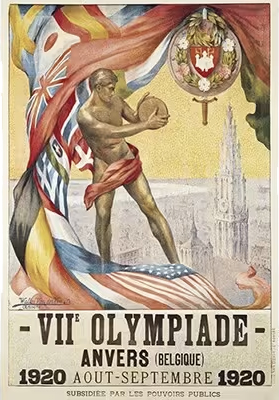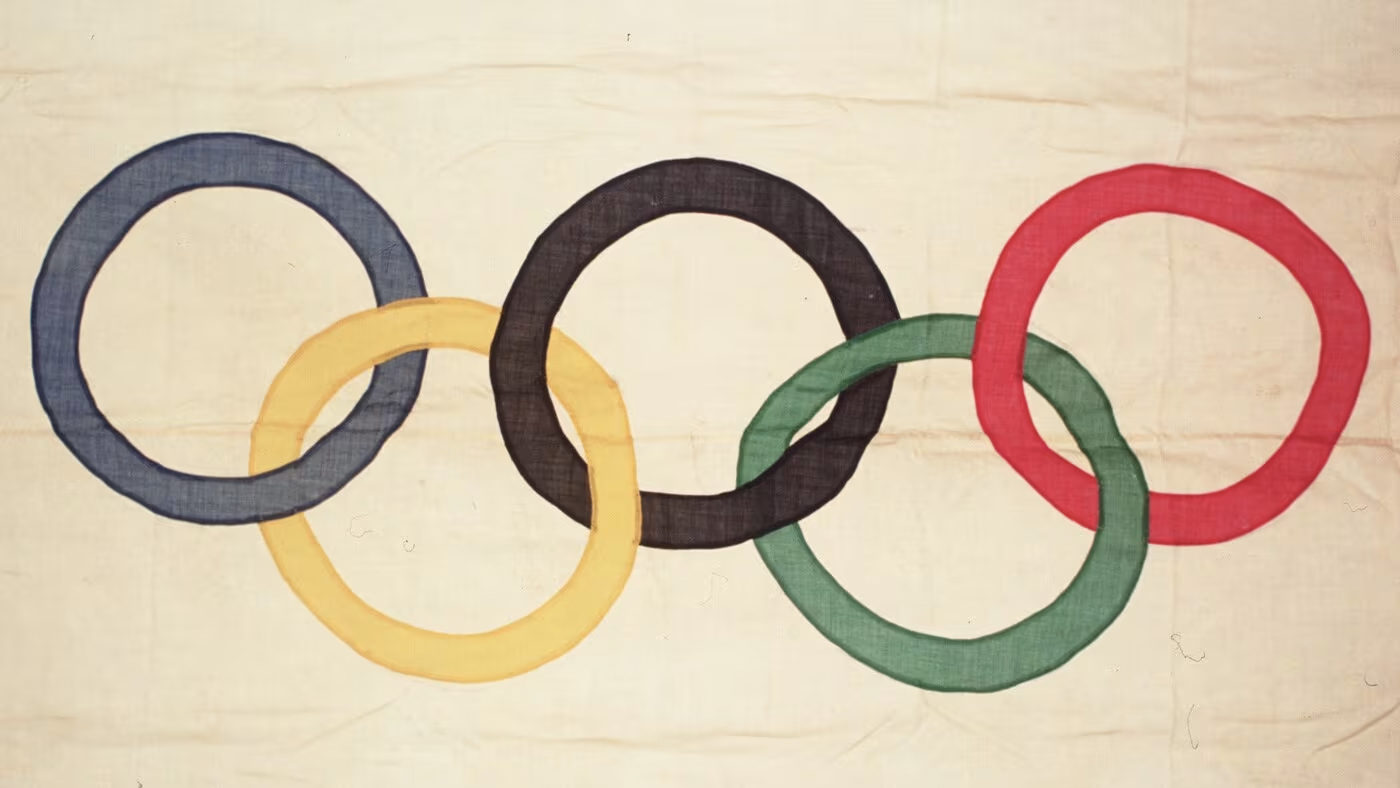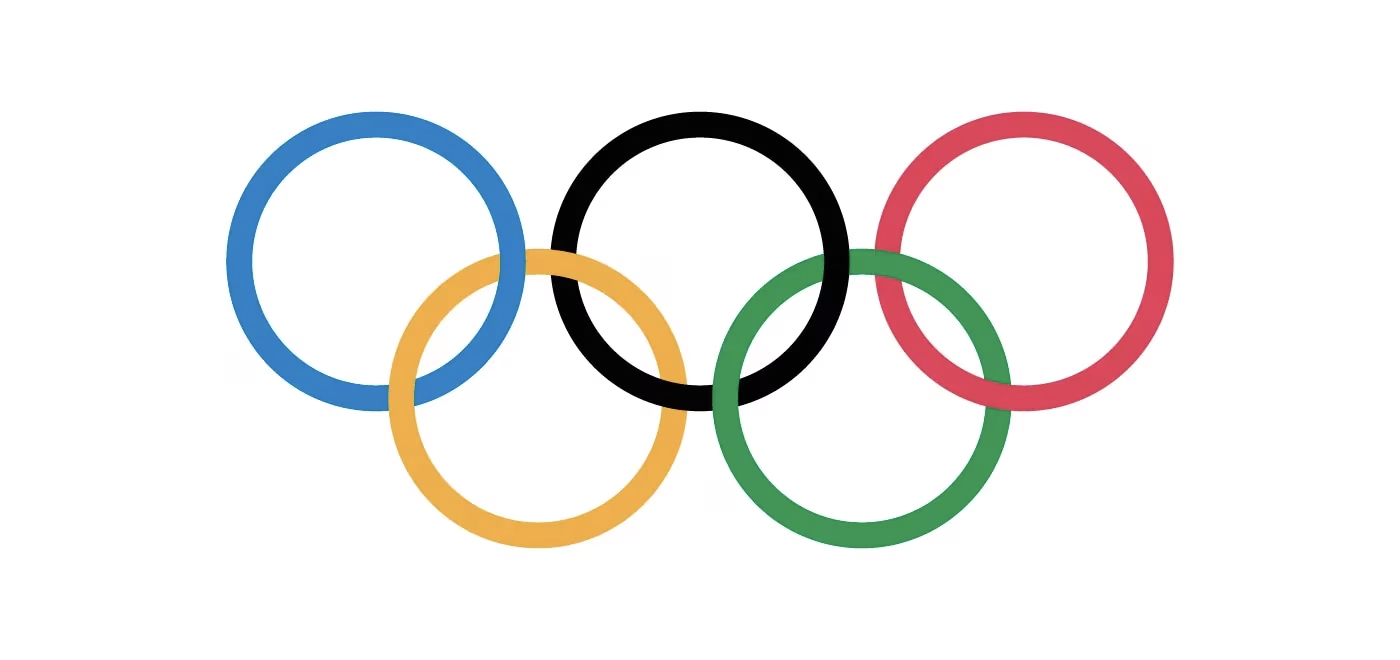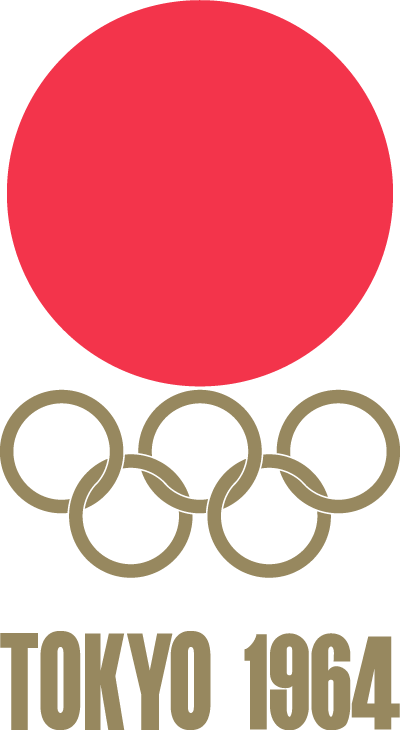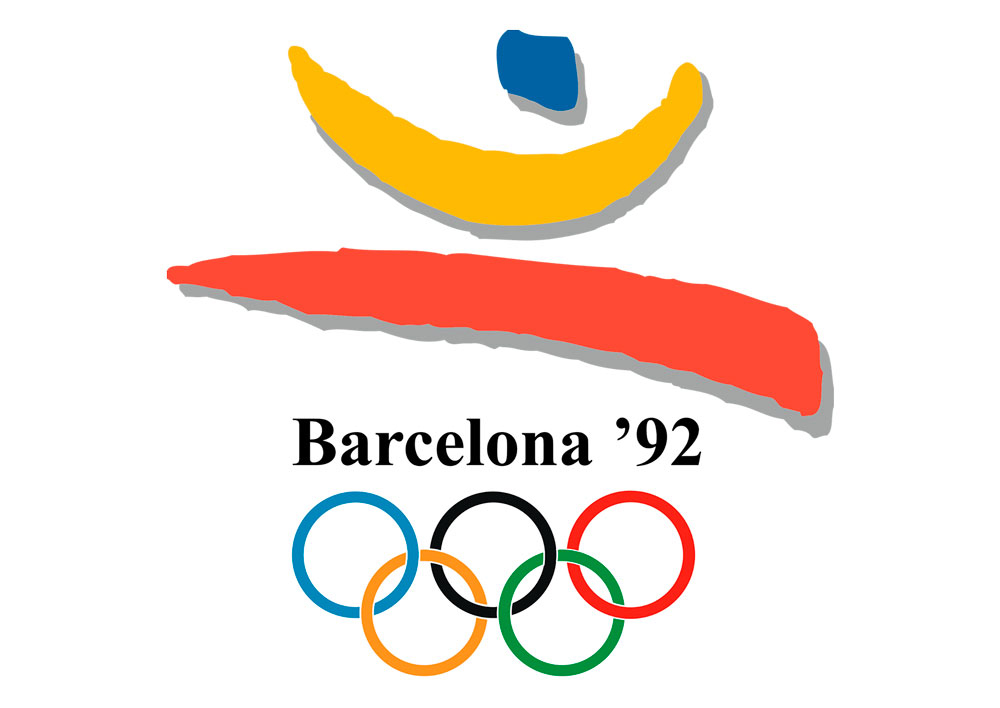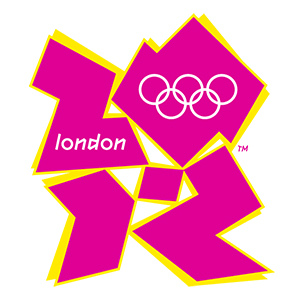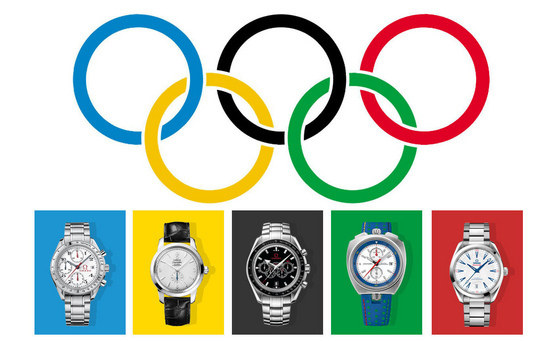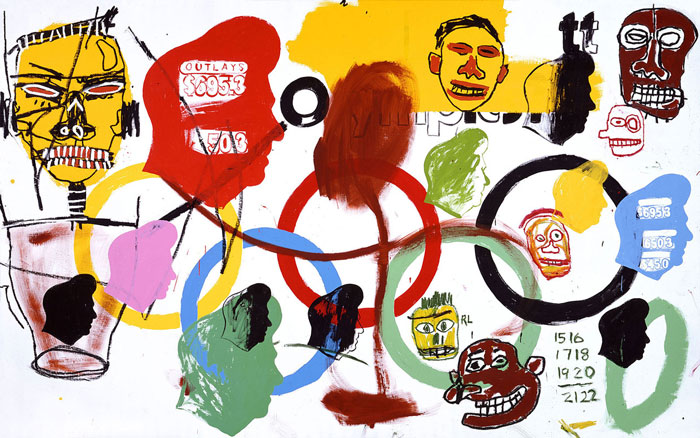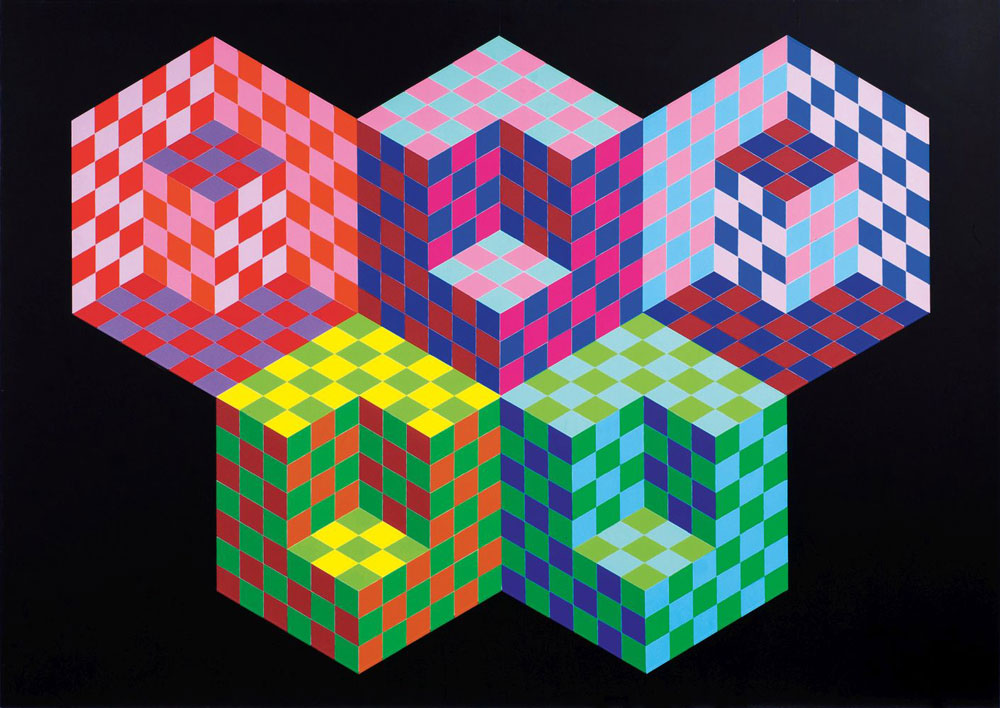The Legacy of the Olympic Rings
Share this article
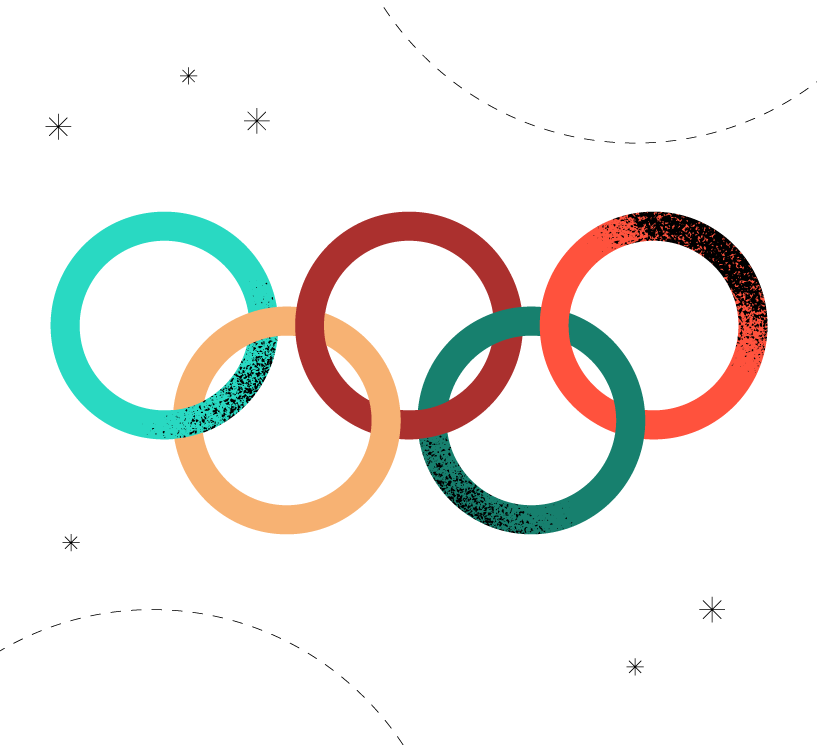
The upcoming Olympic Games to be held in Paris this year (July 26-August 11) will not only continue the storied heritage of the Olympic Games. They will also introduce innovative elements that reflect the city’s rich cultural history and commitment to sustainability. Paris, a city synonymous with art, history and revolution, promises an Olympic Games that blends tradition with modernity.
Pierre de Coubertin founded the International Olympic Committee (IOC) in 1894. He set out to revive the ancient Olympic Games to promote peace and understanding among nations. He proposed what would become the modern Olympic Games. The first was held in Athens in 1896, followed by the 1900 Games in Paris.
In the summer of 1912, athletes from all five continents – Africa, Asia, Europe, Oceania (Australia and New Zealand), and the Americas – competed for the first time at the Stockholm Olympics in Sweden. It wasn’t just another sporting event; it was the moment the Olympics truly went global. Feeling the vibe of this newfound unity, Coubertin was inspired to sketch what would become a timeless symbol: the Olympic rings. And guess what? His original 1913 design is still what pops into our minds today. The five interlocking rings, colored blue, yellow, black, green, and red on a white background. They were designed to represent the five inhabited continents of the world at that time: Africa, the Americas, Asia, Europe, and Oceania.
Since their debut, these iconic rings have been a staple of every Olympic gathering, winter or summer, with little change to their look. The only slight remix came in 1957 when the space between the rings was widened a bit. But in a throwback move in 2010, the IOC decided that old school was cool and went back to Coubertin’s classic design and spacing. That’s the version that captures our imagination today.
Source: Antwerp 1920 Olympic logo, poster design & look of the games (olympics.com)
More than just a logo, the Olympic rings are a powerful symbol of unity, solidarity, and harmony among diverse nations. The interlocking design signifies the global gathering of athletes who transcend geographic and political boundaries to compete in a spirit of fair play and mutual respect. This symbolism is deeply rooted in the Olympic Charter, which promotes a peaceful society that is concerned with the respect of human dignity.
Source: Olympic rings – Symbol of the Olympic Movement (olympics.com)
Over the years, host countries have creatively reimagined the Olympic Rings. They reflect their unique cultures and heritage while adhering to the core values of Olympism. These artistic interpretations have become a highlight of the Opening Ceremonies, showcasing the innovation and creativity of the host country.
The 1964 Tokyo Olympics marked Japan’s postwar reemergence on the world stage. The logo, designed by Yusaku Kamekura, featured a rising sun in red. A traditional Japanese symbol, incorporated into the Olympic rings. This design not only symbolized a new dawn for Japan. It also reflected the universal appeal of the Olympic Games, combining a local symbol with a global perspective. The logo’s simplicity and bold color choice have made it a timeless symbol in Olympic history.
Source: File:Tokyo 1964 Summer Olympics logo.svg – Wikimedia Commons
Beautifully simple and minimalist. Symbol of Japan – red rising sun over gold lettering. The pinnacle of minimalism and the Japanese drive for perfection. Universal symbolism. Instantly recognisable. You just simply can’t get better than that, (Maciej Ochęcki, Desing Lead at Admind Branding & Communications)
In 1968, the Olympics traveled to Latin America for the first time, hosted by Mexico City. American designer Lance Wyman created a vibrant logo that mirrored the festive culture of Mexico while embodying the dynamic spirit of the 1960s. The logo featured radiating lines forming the year ’68’, integrated with the Olympic rings and the word ‘Mexico’. The design captured the energetic vibe of the host city and remains a celebrated example of how Olympic logos can embrace local artistic traditions.
The extremely creative interlocking of the Olympic rings, the number 68 (the date) and an aesthetic derived from Mexican folk art. The logo is the centrepiece of geometric patterns radiating from the centre. Visually appealing, some might even say trippy (a possible reference to the emerging hippie movement and counterculture?), but still memorable. (Maciej Ochęcki, Desing Lead at Admind Branding & Communications)
The logo for the 1972 Munich Olympic Games, designed by Otl Aicher, is also notable for its minimalist and abstract approach. The design features a stylized representation of the sun, which Aicher described as “the shining sun,” symbolizing the enlightened spirit of the games. The choice of a bright blue and geometric shape was intended to convey a sense of peace and tranquility, a poignant message after the turbulence of the 1960s.
For the 1992 Olympic Games in Barcelona, Josep Maria Trias created a logo that reflected the city’s artistic heritage. The logo features an athlete leaping over the Olympic rings, with stylized strokes that evoke the brushwork of Spanish art. This design not only symbolized the athletic prowess celebrated at the Olympics. Also paid homage to Barcelona’s rich cultural fabric, blending art and sport in a visually compelling way.
Source: File:Barcelona-92-logo-horizontal.jpg – Wikimedia Commons
The logo for the London 2012 Olympic Games, designed by Wolff Olins, broke away from traditional design in favor of a bold, modernist approach. The logo’s fragmented and angular shapes represented the diverse and dynamic fabric of modern Britain. While it initially received mixed reactions for its unconventional aesthetic. The logo successfully symbolized the energy and vibrancy of contemporary London and stands as a testimony to pushing creative boundaries.
Source: London 2012 Olympic logo, poster design & look of the games (olympics.com)
Probably the most controversial of all the emblems and identities. I remember the uproar and shock it caused when it was revealed. People protested, designers complained. Nobody understood it. Has it stood the test of time? Personally I don’t think so, I’m not a fan. But what I do appreciate is its boldness and its non-conformism. It’s energetic, spirited, bright and youthful. Inspired by 70’s and 80’s pop culture, definitely aimed at a younger audience. It’s a bold logo and identity, with all the pinks and bright colours. Probably not enough to become a classic design, or to be revered by professionals and ordinary people, but definitely a standout!
The angular shape of the logo served as the basis for a convoluted grid design system that allowed for the creation of various visuals. From layouts to backgrounds to pictograms. Accompanied by a basic palette of basic colours, all these elements created a unique and flexible system. Complex, over-complicated, controversial? Yes, yes and yes! But hey, memorable, right? (Maciej Ochęcki, Desing Lead at Admind Branding & Communications)
The logo for the 2016 Olympic Games in Rio de Janeiro was created by Fred Gelli’s Rio-based agency, Tátil Design de Ideias. Selected from eight finalists and nearly 140 submissions, the design aimed to embody the spirit of collectivity and the Olympic ethos. Fred Gelli explained that the colors chosen for the logo were inspired by Brazil’s natural environment: “Yellow symbolizes the sun and our warm, vibrant and happy nature. Blue expresses the fluidity of the water that surrounds us and our carefree way of life. Green represents our forests and hope, a positive vision that inspires us to go even further,” said Gelli, highlighting the deeper meanings embedded in the design.
The logo for the Paris 2024 Olympic Games, elegantly combines several powerful symbols into a single, cohesive design. The logo features the feminine face of a Parisienne, an allegory of emancipation and freedom embodied by many characters, including Marianne, the personification of the French Republic. This representation is both a nod to French national pride and the country’s revolutionary spirit. In addition, the Olympic flame is incorporated, referencing the Promethean myth of progress for all and symbolizing the enlightening power of sport and its ability to bring people together across global divides. The gold medal in the background of the logo represents the reward for talent and the pursuit of excellence. The multifaceted design reflects Paris as a symbol of culture, art and freedom, underscoring its role as a welcoming host of the Olympic Games and celebrating the 100th anniversary of the 1924 Paris Olympic Games.
The latest emblem for the Paris Olympics is quite controversial for me. We can clearly see the motif of the Olympic flame, the gold medal in the overall circular shape, but the inclusion of a woman’s face feels strange and out of place. It would be appropriate for a line of beauty products, but I don’t find enough relevance to the sport or the Olympic Games themselves. The visual identity looks bland and generic with all the geometric patterns and shapes, and the washed-out colour palette doesn’t help either.
The only thing that really stands out are the pictograms for the disciplines. Perhaps a little complicated, but visually interesting and cleverly constructed.
Overall, the Paris Olympics visuals could be used as a background for any other brand, event or product. I find it lacking in character and presence. And not enough sporting relevance. (Maciej Ochęcki, Desing Lead at Admind Branding & Communications)
The Olympic rings have also become a ubiquitous icon in various forms of art and popular culture. The five interlocking rings make this symbol one of the most recognized across the globe. Its influence extends far beyond the sports arena, permeating fashion, art, pop culture, and more.
Over the years, major fashion designers have often stepped into the spotlight by creating the official national uniforms for Olympic teams. This collaboration not only brings a touch of high fashion to the world of sports but also highlights the cultural significance and pride of each nation. Designers such as Ralph Lauren and Stella McCartney have created uniforms for the U.S. and U.K. teams, respectively, combining their signature styles with the athletic and patriotic elements of the Olympics.
Moreover, luxury brands such as Omega Watches have been the official timekeepers since 1932. Often feature the rings prominently to underscore their long-standing association with the Olympics. This blending of the rings into various fashion accessories and garments showcases how symbols of athleticism can become symbols of style.
Source: Game On: Omega’s Top 5 Medal-Worthy Olympic Games Special Editions | Watchonista
In the art world, the Olympic rings have been reinterpreted by numerous artists. Figures like Andy Warhol and Victor Vasarely have incorporated the rings into their artworks, using their signature styles to comment on the interplay between sports and art. These artistic endeavors highlight how the Olympics can inspire creativity and introspection about global unity and competition.
Public art installations, like the monumental Olympic rings sculpture designed by Turner-Prize winning artist Anish Kapoor and Cecil Balmond of Arup Group. Displayed in London’s Olympic Park during the 2012 Summer Olympics. It also speaks to the power and inspiration of the Olympic spirit in large-scale artistic expression.
Source: File:ArcelorMittal Orbit at night.jpg – Wikimedia Commons
In pop culture, the Olympic rings are a frequent sight. From parodies in films and TV shows to strategic placements in video games. Like those developed by Sega and Nintendo (e.g. “Izzy’s Quest for the Olympic Rings” (1995), “Mario & Sonic at the Olympic Games” (2007/2008)). The rings are a go-to symbol for evoking the excitement and global camaraderie of the games. Major brands like Coca-Cola and McDonald’s have also leveraged the rings in their advertising campaigns. Tapping into the universal recognition and positive associations of the Olympic brand.
Source: Olympic Coke Cans 2016 – DIELINE (thedieline.com)
The Olympic Games have inspired some of the world’s most respected musicians and composers. They create works that embody the Olympic values of excellence, friendship and respect. Most notably, the 1984 Olympic Games in Los Angeles featured a remarkable spectacle of eighty-four pianos playing Gershwin’s “Rhapsody in Blue”. Legendary film composer John Williams created memorable themes for several games, including Los Angeles and Atlanta in 1996 and the 2002 Winter Games in Salt Lake City.
The 1992 Games in Barcelona further strengthened this tradition, highlighted by the memorable operatic collaboration of Montserrat Caballé and Freddie Mercury in the performance of “Barcelona,” which set an exuberant and artistic tone. This tradition was enriched by the performances of famous tenors such as Alfredo Kraus, Plácido Domingo, and José Carreras. Together with Sarah Brightman, sang “Amigos Para Siempre,” the official song of the Games.
The Olympic Games are a symbol of global unity and athletic excellence. They have not been without their share of controversies that challenge the very ideals they seek to uphold. From questions of inclusivity to geopolitical tensions, the Olympics offer a complex narrative that intertwines with global socio-political issues.
The founder of the modern Olympic Games and the author of the Olympic rings symbol, Baron Pierre de Coubertin, held views on women’s participation that today would be considered regressive. He was notably sceptical about women’s involvement in the Olympics. Believing that their participation should be limited and that the games should primarily showcase male athleticism. Despite Coubertin’s initial resistance, women’s participation in the Olympics has grown significantly. This has led to a near-equal representation of male and female athletes in recent games. However, this shift highlights an ongoing struggle to align the Olympic spirit with true inclusivity and equality.
The selection of Olympic host cities has sometimes sparked intense debate over human rights concerns. For example, the 2008 Beijing Olympics and the 2014 Sochi Winter Olympics drew widespread international criticism. Various human rights abuses were attributed to the host nations, China and Russia. Ranging from the suppression of free speech to the mistreatment of minority groups. These cases raise questions about the ethics of awarding the Games to nations. The policies and practices are at odds with the Olympic Charter’s emphasis on promoting a peaceful society concerned with the preservation of human dignity.
Another recurring controversy concerns the participation of athletes from countries with links to terrorism.
The presence of such nations at the global event can be seen as contradicting the Olympic ideals of peace and global unity. However, the International Olympic Committee (IOC) maintains that the Games are neutrally designed. They promote dialogue and understanding among nations, regardless of their political standing or global perceptions.
The Olympics have also been the site of political boycotts that have affected the inclusivity and universal appeal of the Games. Notable examples include the 1980 Moscow Olympics, were boycotted by 63 nations due to the Soviet invasion of Afghanistan. The subsequent 1984 Los Angeles Olympics, which were boycotted by the Soviet Union and several of its allies. These boycotts not only diminish the level of competition, but also stray from the Olympic ideal of bringing the world’s athletes together regardless of geopolitical issues.
Host cities often face significant economic burdens, and local communities can suffer from displacement and gentrification. The 2016 Olympic Games in Rio de Janeiro, for example, led to widespread displacement and exacerbated social inequalities in the city. This aspect of the Olympics raises concerns about the social costs of hosting the Games and whether they truly benefit host communities in the long term.
The inclusion of transgender athletes in the Olympic Games has generated significant debate and controversy, reflecting broader societal discussions about gender identity and fairness in sports. This issue touches on complex issues such as competitive equity, biological differences, and the rights of transgender individuals to compete.
One notable case that highlights these tensions is that of Lia Thomas, a transgender woman and competitive swimmer. Despite meeting NCAA (National Collegiate Athletic Association) standards for transgender athletes, Thomas faced significant public scrutiny and debate over her eligibility to compete in women’s swimming events. The controversy intensified when it was decided that the Paris Olympics would not include her participation. Ongoing discussions about how best to balance inclusivity with fairness in women’s sports were the basis for this decision. Particularly with regard to physiological advantages related to testosterone levels and other physical attributes.
These controversies suggest that while the Olympic Games strive to embody ideals of unity and fairness, they often reflect and sometimes reinforce existing global inequalities and conflicts. The ongoing challenge for the IOC and the global community is to ensure that the Games not only celebrate athletic achievement but also uphold and promote the highest standards of justice and inclusiveness.
More than just a symbol, the Olympic rings embody a rich legacy that transcends sport. Over the decades, this iconic emblem has not only symbolized global unity and the spirit of competition, but also reflected the evolving dialogues on cultural diversity, artistic expression and social responsibility. Each Olympic Games provides an opportunity to celebrate this storied heritage while innovatively reflecting the character and aspirations of the host city. The designs and interpretations of the rings have always served as a confluence of tradition and contemporary values, showcasing the unique cultures and visions of the host nations.
However, as we delve deeper into the Olympic narrative, it becomes clear that the Games are not only a platform for athleticism, but also a mirror that reflects broader societal and global issues. From debates on gender inclusivity and human rights to the complexities of hosting such a mammoth event, the Olympic Games provoke discourse on pressing global challenges and demand continuous reflection and action from all stakeholders.
As the world looks forward to future Olympic Games, including the upcoming Paris 2024, it is imperative to not only cherish and uphold the high ideals that the Olympic rings represent, but also to actively engage in addressing and resolving the controversies that challenge those ideals. Embracing this dual role can ensure that the Olympic Games remain a true beacon of hope, resilience and unity in the global arena, inspiring generations to come in both athletic prowess and ethical governance. In this way, the legacy of the Olympic rings continues to evolve, as dynamic and enduring as the spirit of the Games themselves.
IOC – International Olympic Committee | Olympics.com
The Fashion Olympics: Stella McCartney, Ralph Lauren Design for Rio | Allure
7 Significant Political Events at the Olympic Games | Britannica
